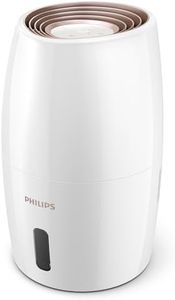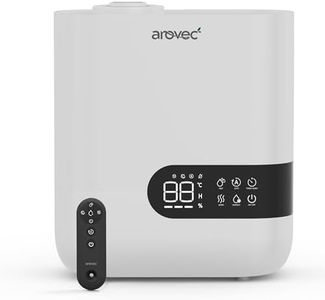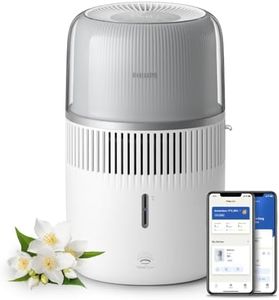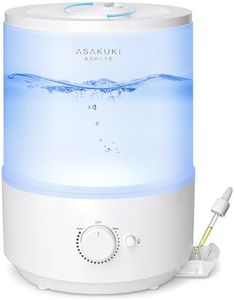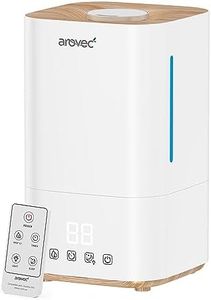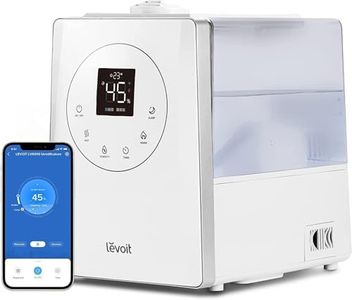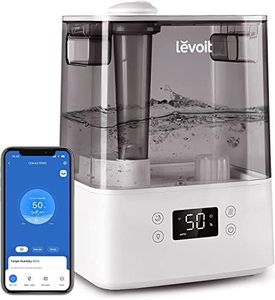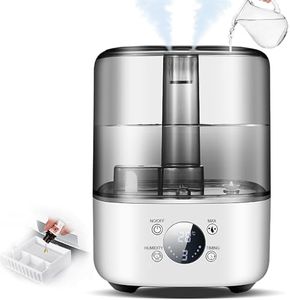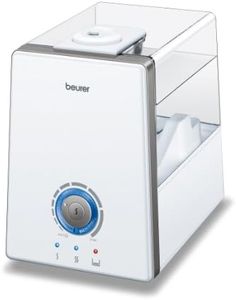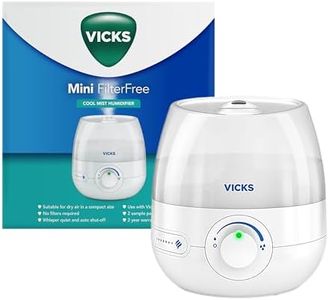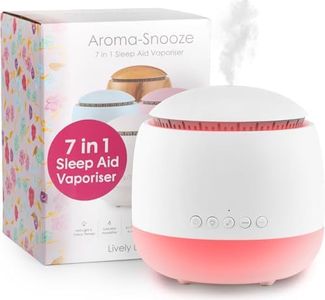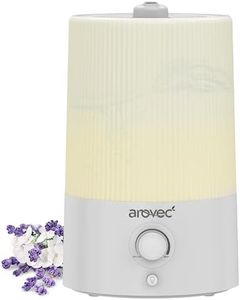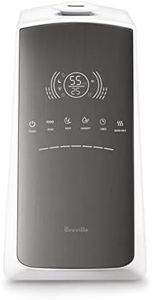We Use CookiesWe use cookies to enhance the security, performance,
functionality and for analytical and promotional activities. By continuing to browse this site you
are agreeing to our privacy policy
10 Best Kids Humidifiers
From leading brands and best sellers available on the web.Buying Guide for the Best Kids Humidifiers
Choosing a kids humidifier involves thinking about the size of the room, ease of cleaning, noise level, and overall safety features, since it will be used around children. The right humidifier keeps the air comfortably moist, which can help reduce dry skin, stuffy noses, and coughs. It’s important to focus on options that are kid-friendly, simple to maintain, and don’t add any risk to the child's room environment.Tank CapacityTank capacity is the amount of water a humidifier can hold at one time, affecting how long it can run before it needs refilling. For small nurseries or bedrooms, smaller tanks (about 0.5 to 1 liter) are usually enough and make the humidifier lighter to handle. Medium rooms may benefit from 1 to 2-liter tanks, which last through the night. Bigger tanks are great for larger playrooms but can get bulky. Choose a tank size that matches the size of your child’s room and how often you want to refill it.
Mist Type (Cool Mist vs Warm Mist)Humidifiers create either a cool mist or a warm mist. Cool mist is often recommended for kids because it's safer; there is no risk of burns from hot steam, making it a good choice for nurseries and bedrooms. Warm mist models can make the room feel cozier in cold climates, but they can get hot, so they’re less common and less safe for little ones. Think about your climate and safety concerns—generally, cool mist is best and safest for children.
Noise LevelNoise level describes how loud the humidifier is during use. Some models hum quietly, while others might gurgle or buzz. For a child’s room, look for models described as quiet or whisper-quiet, especially if your child is a light sleeper. If you plan to use the humidifier overnight, a lower noise level is important for not disturbing sleep.
Ease of CleaningEase of cleaning refers to how simple it is to open, empty, and scrub the humidifier’s parts. Kids humidifiers need to be cleaned frequently because germs and mold can grow quickly in moist environments. Look for designs with wide openings that you can reach into, simple parts that don’t trap grime, and check the instructions to see if everything can be wiped down easily. If cleaning is a hassle, you might not do it as often, so simple cleaning keeps things more hygienic.
Filter TypeSome humidifiers use filters to remove minerals or impurities from the water; others are filterless. Filtered models can help reduce white dust or allergens but will need regular filter changes. Filterless types need less ongoing work but may release more minerals if you have hard tap water. If your child has allergies, a filtered model can be a good idea, but remember to factor in the work of changing filters. Otherwise, a filterless version may be easier day-to-day.
Automatic ShutoffAutomatic shutoff is a safety feature that turns the humidifier off when the water runs out, preventing overheating or damage. This is especially important for kids’ rooms, where you may not always notice when water is low. Having this feature means you can run the humidifier overnight without worrying about safety risks if the tank empties.
Night Light or Extra FeaturesMany children’s humidifiers include a built-in night light or playful designs. A gentle night light can be comforting to children and help parents attend to them at night. Some models play lullabies or project images, but the most important thing is that these extras don’t make the humidifier too bright or complicated to use. Choose features that suit your child but keep things simple to maintain.
